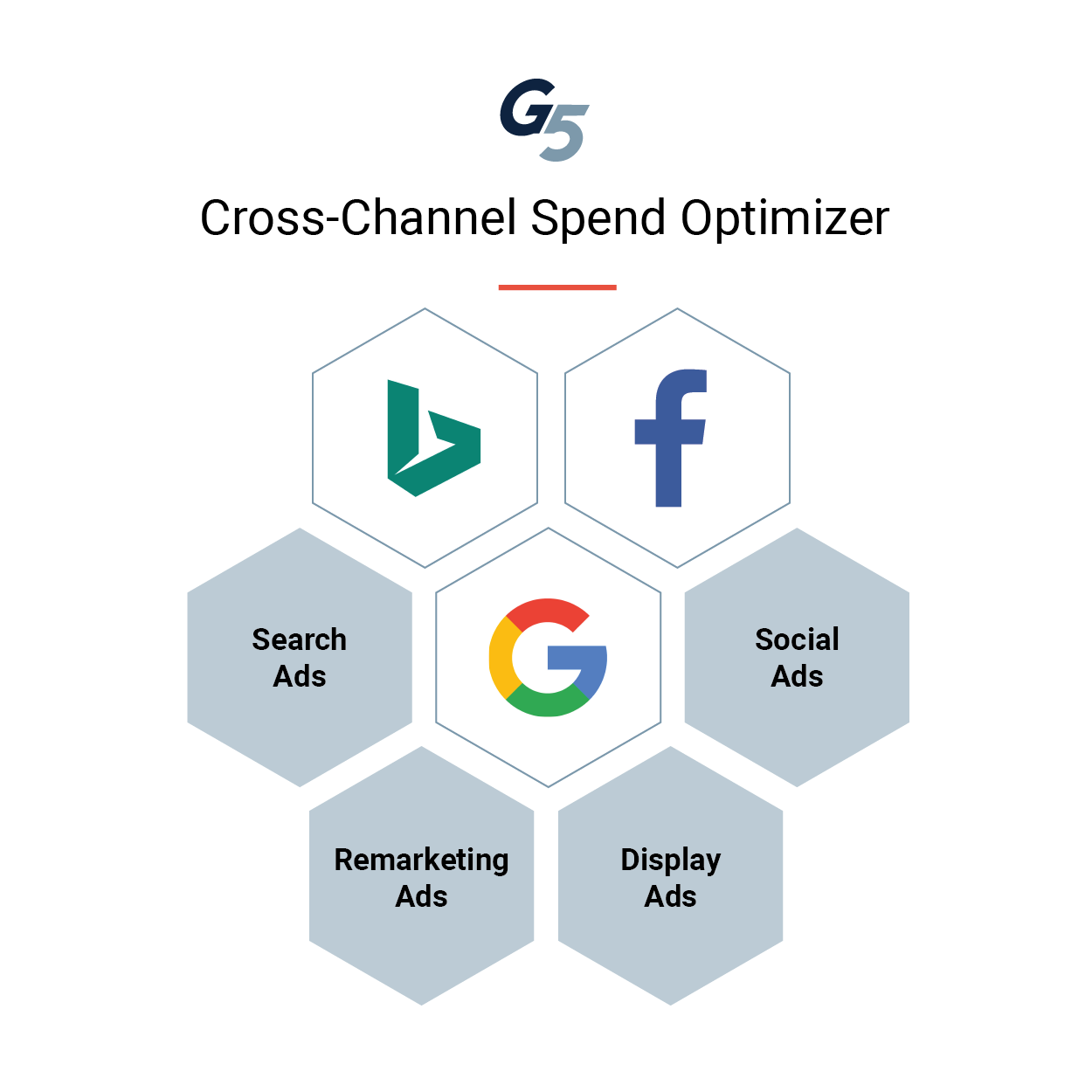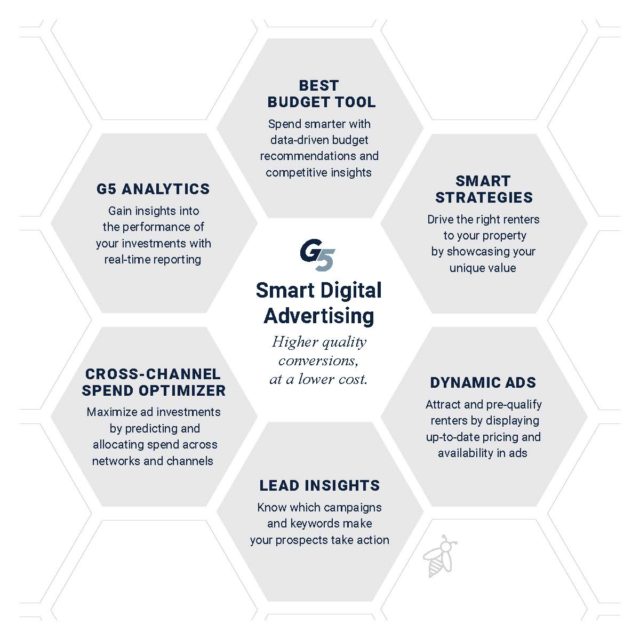
Introducing Predictive Marketing
Before the internet and its digital revolution, consumers consulted relatively few channels before making a rental decision – TV, radio, and magazines, for example. But today’s marketers don’t have it so easy. In fact, the renters’ journey has become so complex that it averages 20 stops along the way. With so many touchpoints, how do you know where to invest your marketing dollars to ensure the greatest impact? The key is attribution – and it’s more than assigning credit. It’s the backbone of predictive marketing.
Marketers pore through piles of data trying to understand previous trends and making adjustments based on what they observe. But humans can only process so much data – and they usually only look at it on a quarterly or monthly basis which means decisions are based on historical data, not the future. Predictive marketing, on the other hand, allows you to be nimble by using data and automation to make proactive strategy adjustments.
Does Your Attribution Model Answer the Right Questions?
For those unfamiliar with attribution modeling, Google defines it as the rule, or set of rules, that determines how credit for sales and conversions are assigned to touchpoints in a conversion path. A number of models are widely used by marketers today, but the most common are single-touch and multi-touch. Which model you select depends on the data you would like to collect and the questions you need to have answered.
Single-Touch Attribution
Single-touch is the most basic form of attribution modeling, assigning 100% of revenue credit to an individual campaign or touchpoint.
First-touch attribution gives credit to the first touchpoint in the renter’s journey. This model is most useful for businesses with short sales cycles that want to identify how customers initially come into contact with their brand.
Last-touch attribution is a model that assigns full credit for a conversion to the last touchpoint in the renter’s journey. It is the default attribution model in Google Analytics, as it is considered the most effective for determining which messages convince prospects to make a buying decision.
Multi-Touch Attribution
Multi-touch attribution is more sophisticated than single-touch, taking into account multiple touchpoints in the renter’s journey. This supports a more nuanced view of human behavior than a single-touch model.
Linear attribution evenly distributes credit to each touchpoint a renter engaged with before converting. This model assumes that each channel in a user’s path was equally important in leading them to convert.
Time decay attribution is similar to linear attribution in that is also gives credit to each touchpoint in the renter’s journey, although not equally. Instead, it assumes that the closer a touchpoint is to a conversion event, the more important that touchpoint was in leading that user to conversion.
U-shaped multi-touch attribution takes it a step further by assigning 40% of the credit to each the first and final interactions. The remaining credit is then distributed evenly among the remaining touchpoints.
While each of the above-listed models has its own unique use case, they are overly assumptive, only provide data on historical trends, and do not predict future outcomes. Probabilistic multi-touch attribution does – and it does so without the biases of single-touch and simple multi-touch attribution.
What is Probabilistic Multi-Touch Attribution Modeling?
Probabilistic attribution modeling may sound complicated, but as a marketer, it’s about to become your best friend. Why? Because it’s an essential building block of predictive marketing.
Like single-touch or simple multi-touch attribution, probabilistic attribution tracks the entire buyer’s journey from the first click to the last call. What differentiates it is that it utilizes a proven data science model (Markov Chains) to measure the impact that removing an individual touchpoint has on conversions – a process called “removal effect.” Touchpoints are weighted and ranked according to their impact on conversions. This data is important because it identifies which touchpoints are fundamental to driving marketing conversions.
Probabilistic Becomes Predictive: G5 Smart Digital Advertising Innovates with Cross-Channel Spend Optimizer
Probabilistic modeling is the crux of predictive marketing and is the basis for Cross-Channel Spend Optimizer, the latest innovation to be included in G5 Smart Digital Advertising. Cross-Channel Spend Optimizer predicts where you should spend your next dollar to maximize conversions, and automatically allocates daily digital advertising investments across networks (Google, Microsoft, and Facebook) and channels (social, search, display, and remarketing). It assigns a priority to campaigns based on their recent performance and then allocates spend across channels to achieve the best return.
Another benefit is that the technology chooses the best campaigns based on performance and then shifts spend in a way that spends budget evenly throughout the month. The fact that this works across Facebook, Google,and Microsoft Ads increases reach; especially since the renting journey is so complex and not confined to Google search.
This is important as each property can have up to dozens of campaigns running at any given time. Extrapolate that across your entire portfolio, or even an individual region, and the sheer volume of data collected by each campaign – there are literally millions of data points – is impossible for a human to analyze performance and make adjustments daily.
Increase Conversions & Lower Costs with Predictive Marketing

Predictive marketing takes into account the previous performance of each campaign and determines the probability of it leading to a conversion across the entire renter’s journey. With simpler attribution models, we are only able to say which campaigns had an impact at the renter’s first or last stage. With multi-touch attribution, we look at the entire online experience and prioritize campaigns that are most likely to have an impact on performance. Thus, we are considering each campaign in relation to the others and making decisions based on how those campaigns will drive more leads to a property.
Predictive marketing is the future of marketing efficiency – and it can have an immediate impact on your portfolio. In a recent trial, customers using G5 Smart Digital Advertising with Cross-Channel Spend Optimizer averaged up tp 25% higher advertising conversions and as much as a 15% reduction in cost-per-click using the same budget.
For more information, schedule a demo of Smart Digital Advertising today.
Get News, Articles & Updates in Your Inbox
Thank You for Your Interest
We will be in contact soon and look forward to learning more about you and your company. Based on your marketing challenges, we’ll discuss increasing visibility into your analytics and how to generate more and better leads so you can achieve your marketing goals.
In the meantime, we invite you to check out our checklist on website accessibility. Use this checklist to start assessing the baseline accessibility of your website.
Enjoy! We’ll be in touch very soon.
